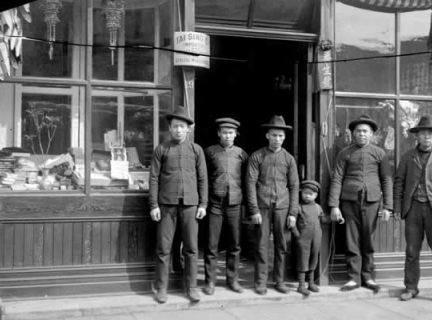Clans and District Associations

The word "clan" has been used in the past to translate two Chinese words: zu (祖 Traditional / 组 Simplified) and zong (踪 Traditional / 总 Simplified). Zu is narrower in meaning and refers to a family with unilineal descent and institutions such as ancestral halls, graveyards, and lands. Two or more zu with the same surname and linked by a common, distant ancestor belong to the same zong.
Overseas Chinese who shared the same surname — although not directly related — assumed that they may have had a common, remote ancestor, and that in the broad sense of the word (zong), they were clansmen to each other. The majority of Chinese immigrants in Canada belonged to a few large clans and shared a small pool of surnames.
Clansmen formed clan and native-place (district) associations or huiguan (會館 Traditional / 会馆 Simplified), which flourished in early Chinatowns across Canada. These associations were based on models which the migrants were familiar with from China, and provided social services as well as opportunities to express cultural traditions. The associations also attempted to protect their members and negotiate on their behalf against discrimination and other problems. Chinese immigrants paid dues to their clan associations, and their counterpart clan associations, back in China, were notified that the dues had been paid.
Clan associations continue today. Some produce publications which, on occasion, include information about family history. Clan association publications are usually published in Chinese. Many of these publications are available at the Asian Library, University of British Columbia (UBC).
The UBC Asian Library may also be able to provide contact information for clan associations in Canada and elsewhere.
